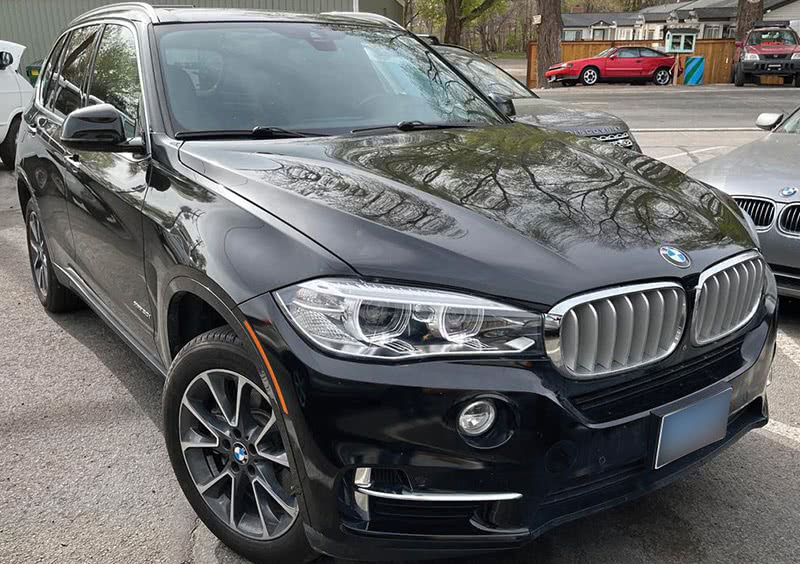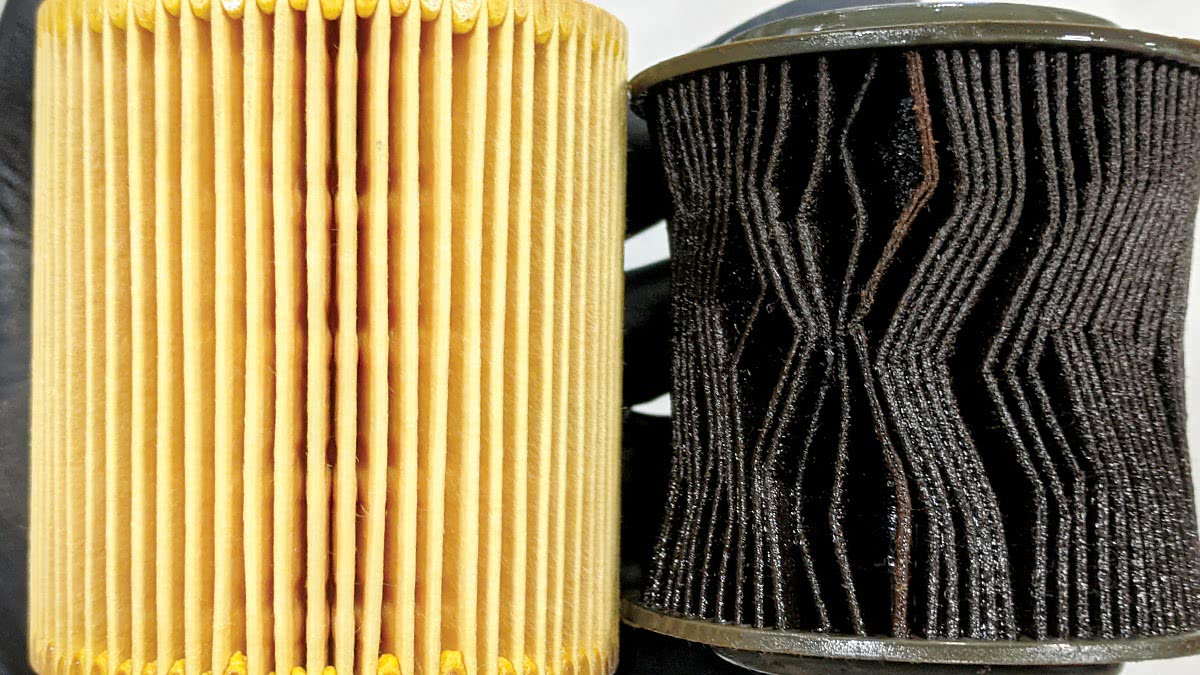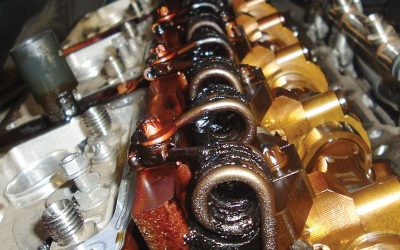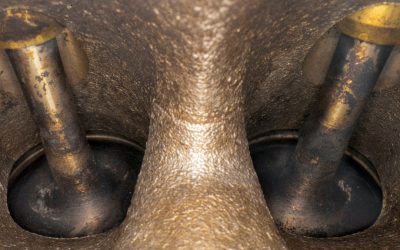What to be aware of when servicing and repairing BMW’s Sports Activity Vehicles and Coupes.
This month, we will take a further look at BMW’s X-series of vehicles, but first a quick review. (If you missed part 1, click here.)
BMW started the Sports Activity Vehicle moniker with the first generation X5 in 2000. After being met with positive reviews and sales figures, the X3 was added a few years later, in 2003. As BMW has expanded their sedan lines, so too has the X-series family been expanded. There are now seven models in all, the X1 through the X7. There are two door models, which BMW has labeled Sports Activity Coupes, and various powertrain options including sDrive (front wheel or rear wheel drive depending on the model), and the familiar xDrive (all-wheel drive). There is even the iX all electric Sports Activity Vehicle.
All these vehicles push boundaries in the spirit of performance and excellence while holding true to classic design features like the Hofmeister Kink (the forward angle at the bottom edge of the rear quarter window, named for prior BMW chief of design Wilhelm Hofmeister), dual front kidney grilles and aggressive stance.

It took BMW forty some years to go through all the E chassis numbers, but with all the new models and options the Bavarian auto maker has burned through the F series chassis in a quarter of that time and has already headed into G chassis.
For Part Two of this article series, we are going to look at specific things that shops need to be aware of when servicing and repairing BMW’s Sports Activity Vehicles and Coupes.
Tires & Wheels
Before moving onto some of the newer technology and latest models, we will start at the ground level, where the rubber meets the road: the tires. Often overlooked as one of the simplest parts of an automobile, tires deserve more attention than they get. Tire replacement and maintenance is usually handed off to the youngest and newest technicians in the shop. This makes good sense for a shop’s billable labor hours and bottom line, but these younger techs need proper training and oversight when dealing with tire concerns, especially on BMW vehicles. Many of the standard ways of servicing tires have become outdated.
The following vehicle study features a 2014 X6 and illustrates several key points to be aware of when dealing with tire-related concerns on an X-series vehicle. This Sports Activity Vehicle was brought into the shop for a Tire Pressure Monitor message displayed and the owner had requested a tire rotation as well. The technician confirmed that the TPMS light was displayed in the cluster and then started by checking the Tire and Loading Information label in the door jamb before visually inspecting all the tires.

Starting at the tire label is a good habit to get into, as there is valuable information to be gained there. We can see that the tire size is the same front and rear, and that there is no spare present on this X6. Due to space restrictions and to save every ounce of gross vehicle weight, the spare tire has been deleted on many vehicles in the X-series family. We can also see the letters XL after the tire size. In this case XL does not mean extra-large, it stands for Extra Load. In fact, there are several abbreviations to be aware of when working with tires for a BMW.
They are as follows:
XL = Extra Load
UHP = Ultra High Performance
RSC = Run-flat System Component
Extra Load tires are stronger, reinforced tires that can run at higher inflation pressures and support more weight for loaded vehicles. The tire pressures have not been dramatically increased on this X6, nor is it an oversized vehicle, so why the Extra Load tires? BMW is using XL tires in place of run flat tires on this application. An XL tire is not a true run flat tire in the sense of having self-supporting sidewalls or a support ring inside the tire, but they do have significantly stronger sidewalls and tread which provide puncture protection. They also offer a longer tread life than run flats, which wear out more quickly than standard tires.
Back on the X6, the technician continued by checking tire pressures and found that several of the tires were underinflated. There were no obvious foreign objects in the tread or damage to the tires, so the pressures were adjusted to specifications. Next up was the tire rotation. The tires were unbolted and removed, but when the technician tried to rotate the rear tires to the front it was discovered that the wheels would not fit on the front hubs. Further investigation found that the front hubs were larger in diameter than the rear, and the wheels were marked with a small F and R to indicate Front and Rear.

BMW service information states that wheels may be exchanged between sides to achieve even tread wear, but they do not recommend rotating wheels front to back on their vehicles. In BMW’s words, this is due to “complaints regarding acoustics†and a “risk of increased lane grove sensitivity†that may be experienced when the rear tires with different wear patterns are moved to the front. This is contrary to the older thinking of not cross rotating radial tires and is further complicated by rotational tires which would be turning in the wrong direction if moved to the opposite axle. The only option to rotate the tires on our case vehicle would be to dismount and reverse each wheel on its rim before moving it to the opposite side. While this can be done, it is quite impractical, with the costs cancelling out any potential savings from extended tire life.
The final step for the X6 was to reset the tire pressure monitor system, also called RDC (from the German ReifenDruckKontrolle, substituting the C for the German K…) initialization. There are different methods to accomplish the reset depending on the year and model of the vehicle, but the reset is accessed through the iDrive menu. Once on the correct screen the vehicle needs to be driven to complete the process. There are also tire pressure service functions in ISTA under the Driver Assistance tab.

All of these factors are important to keep in mind when replacing or servicing tires on an X-series vehicle. The owner needs to be aware of the XL tire requirement, rotation limitations, and the possibility of shortened tread life. After all, an unhappy customer will return to the shop that installed their tires, not the tire manufacturer. Open communication and clear expectations can help to avoid any issues.
Powerplants
There are three main engines in the X-series family, the N20, N55 and the N63. When the N20 was introduced, it was the first U.S. market 4-cylinder engine in over a decade. Now this turbocharged 2.0 liter engine can be found across many X-series vehicles and across the full BMW model line. The inline 6-cylinder N55 engine is the next step up in size. The N20 and N55 share many design elements and components with each other. A twin turbo V-8 4.4 liter rounds out the engine choices. The N63 employs the “hot-vee†design, in which the turbos are housed in the valley of the V-8 engine. This engine option is available in the larger X5, X6 and X7 models.

The heart of any of the X-series vehicles is the engine, and the lifeblood of those engines is the oil. As engine tolerances get smaller and power outputs go up, the oil and filter quality have become more critical. Driving past the recommended service interval and using poor quality, non-OE oil filters can result in costly engine repairs down the road.
There are a variety of oil related technical bulletins for all three of the engine options. The bulletins cover correct oil viscosity, drain plug torque, and oil pan thread repair, as well as turbo lubrication issues and oil consumption. Two class action settlements for the N63 engine can also be found when reading through the bulletin list. These settlements are related to high oil consumption, and vehicles equipped with that engine with excessive oil consumption should be referred to the dealer. Always review service information to be sure the proper oil specification is being used and that any applicable service bulletins are being followed.
BMW has long prided themselves on their engine technology. All the latest Beemer engines use TVDI, which stands for Turbo-Valvetronic Direct Injection. BMW has perfected the twin scroll turbo design and, when combined with the dual Vanos Valvetronic system, the balance between performance and fuel efficiency is quite impressive. Many of the early issues with cam sprocket bolts and piezo fuel injectors have been resolved on these newer three engines. As stated earlier, regular oil services will keep the Valvetronics and turbocharger in peak operating condition.
However, there is another component that is critical to the health and longevity of a turbocharger, and that is the battery. The battery may seem unrelated to the turbo system, but there is an important connection. Normally, when a turbocharged engine is shut off, the oil that remains in the turbo bearings and oil feed line is subjected to heat soak from the exhaust as the engine cools. Over time this leads to coking on the bearings and a restricted oil feed line, which will drastically reduce the life of a turbocharger. To combat this, BMW employs “engine after-run†strategies to allow the turbo to properly cool down.
After-run strategies use the electric coolant pump to circulate coolant throughout the system, which includes the turbocharger. This helps to dissipate the heat out of the turbo and engine oil. In some cases, the electric coolant pump can run up to 30 minutes after the engine has been shut off and the cooling fan can also be activated if needed. This is where the battery comes into play, because if the battery state of charge is too low, the engine after-run will be terminated by the DME. So, battery health and state of charge are critical to maintaining the turbocharger long term. This can be especially true on a vehicle that is only driven on short trips in town. The battery does not ever get fully charged and the engine after-run will rarely be carried out.
Testing and charging the battery needs to be part of the regular service carried out on any turbocharged engine. Running an Energy Diagnosis Report with ISTA will show what the battery state of charge has been over a given time period.

Driver Assistance Technologies
As with most manufacturers, Advanced Driver Assistance technologies are prevalent on all the latest BMW X-series models. Features like Road Sign Recognition, Lane-Change Assist, and Speed Limit Assist are incremental steps towards true autonomous driving. The front desk staff as well as technicians need to be familiar with these systems, the acronyms used, and the basics of how the different features operate.
Take this pre-scan from a 2018 X5 xDrive 50i that came into the shop for scheduled maintenance. There were 16 total faults stored, nine of which were related to driver assistance systems, specifically the front camera and front ultrasonic distance sensors.

This may seem surprising for a vehicle with less than 20K miles, but it illustrates the need to be scanning the vehicles that come in and out of the shop each day. Pre-scans are becoming a necessity on all vehicles in the shop. Whether the vehicle was brought in for routine service or diagnostic testing, the pre-scan offers an overview of the vehicle’s health, and it maintains a paper trail of what faults were present before a vehicle was even pulled into a service bay.
Another point worth mentioning from the pre-scan is the six-digit fault codes that are commonplace now. Manufacturers have had to go to six-digit faults codes to cover all the new diagnostic codes as more and more electronics systems are added to vehicles. Finding accurate code descriptions, setting criteria, and troubleshooting information is becoming increasingly harder for independent repair facilities, especially with these six digits faults. Shops may need to get a daily, monthly or yearly subscription to BMW’s Technical Information System to find the information needed to repair late model vehicles.
Reviewing the full pre-scan report on the 2018 X5 showed that all the faults were listed as intermittent, and not current issues that needed to be addressed. This fact was further confirmed by verifying there were no warning lights or messages displayed on the instrument panel.

The open circuit faults for the ultrasonic sensors were mildly concerning, but further discussion with the client revealed that the front bumper had recently been removed and repaired after a minor fender bender. The remaining faults dealt with the front camera on the vehicle and mentioned camera blindness, overheating, and a connection issue. While performing the service, the technician visually inspected the front camera to see if there was anything restricting air flow or blocking the lens. Nothing unusual was found on this X5, so after the service was completed a final note was added to the work order stating that:
“There were multiple faults on the vehicle pre-scan for the front camera and front distance sensors. Client states the front bumper was recently removed which is the likely cause of the open circuit distance sensor faults. No visible issues were found with the front camera at this time. The faults were cleared from memory. If codes return, further testing will be required.â€

Taking a few extra minutes to visually check the camera and sensors and writing an additional note on the work order adds value for the client and it adds a layer of protection for the shop in the event of any future issues.
X-series owners (or any BMW owner for that matter) can be challenging to deal with at times. They take a great deal of pride in their vehicle and often expect a higher level of service. Pay attention to the small things that the owner would notice. For example, the clock being at the wrong time after a battery replacement, or a porter who changed the radio station from a ‘70s singer songwriter to ‘90s alternative grunge. These small items often get lost in the chaos of a busy shop, but they are important. They are important to retaining customers and for word-of-mouth referrals.
By Jordan Hill





Download PDF option is not working
Thanks for bringing this to our attention, Kevin. The download button should be operational. Please let us know if you experience any further challenges.